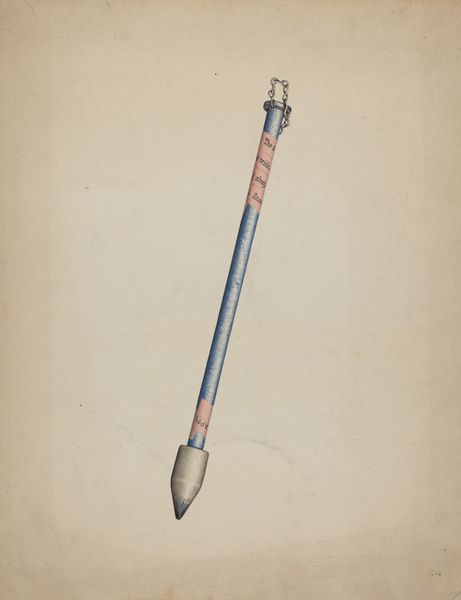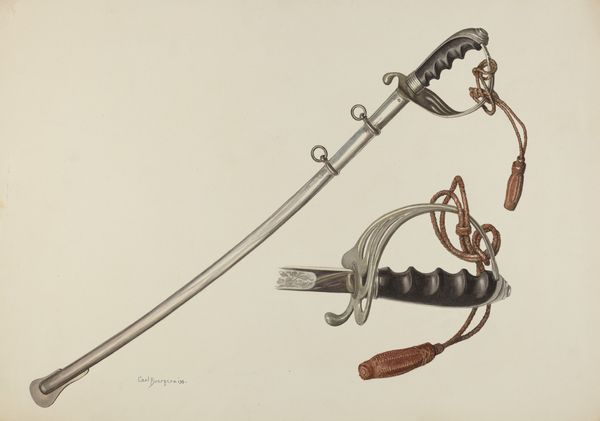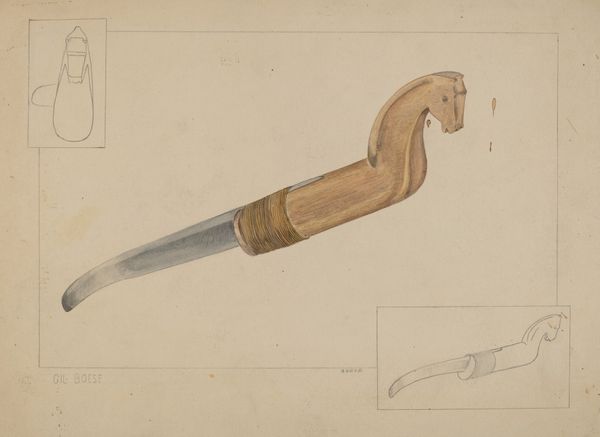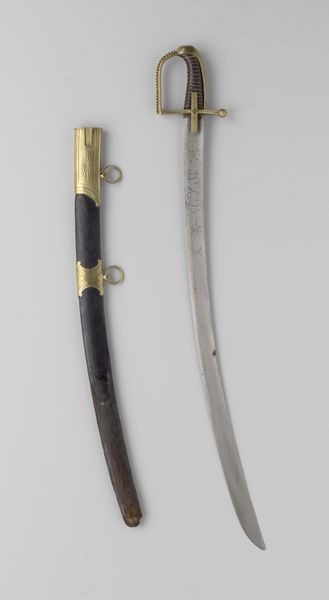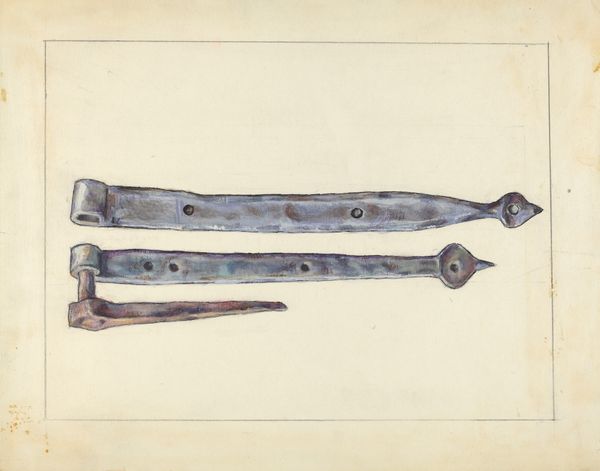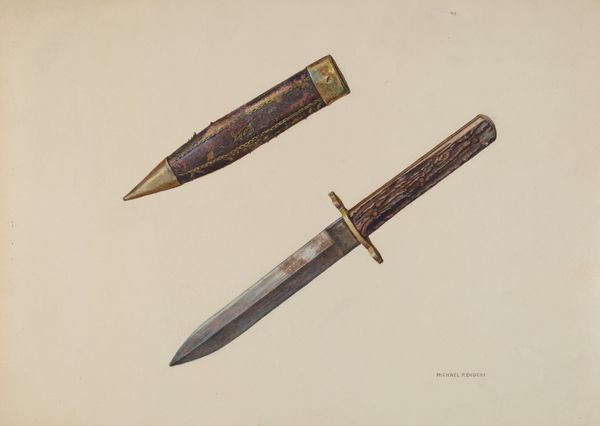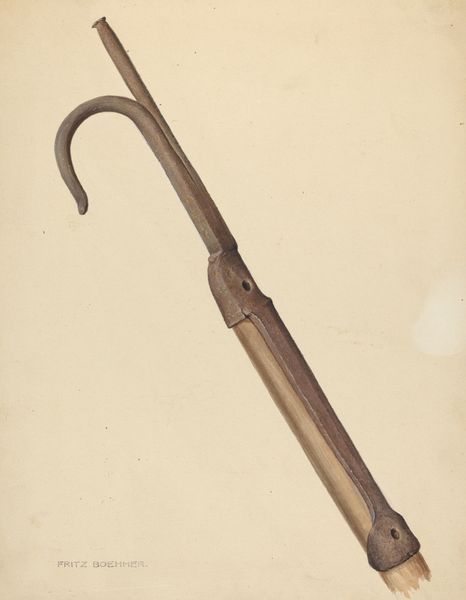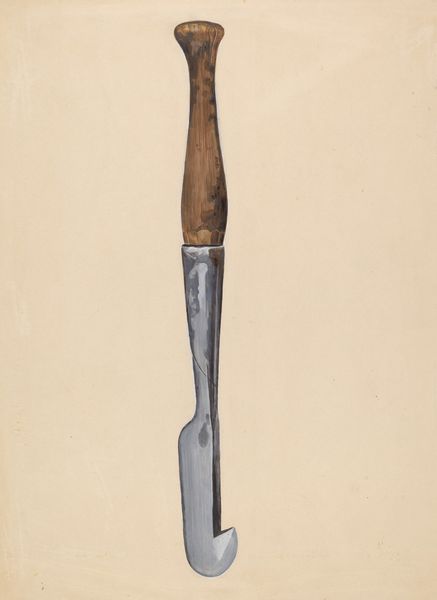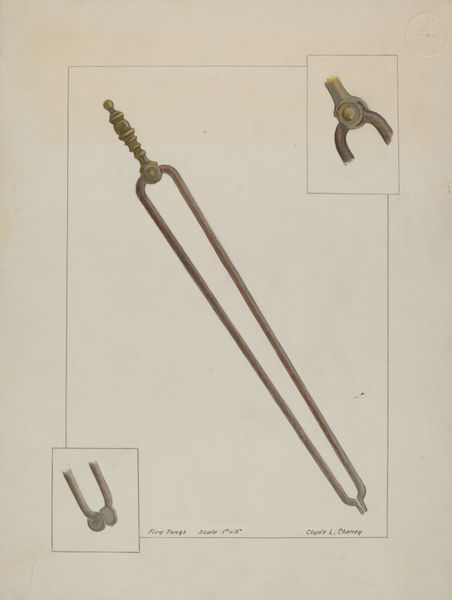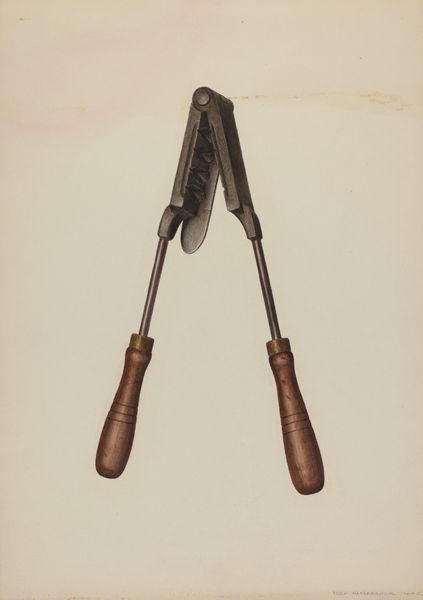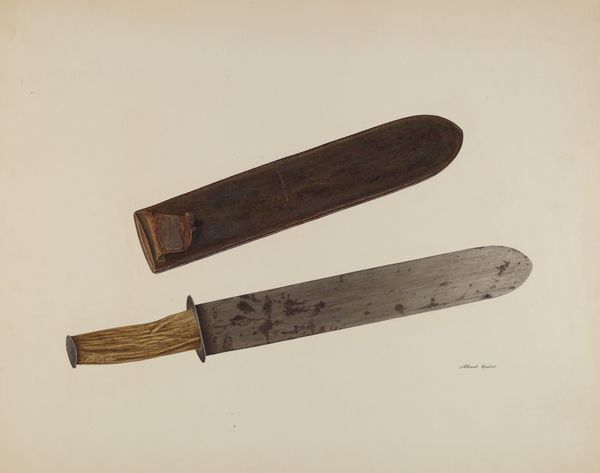
drawing, watercolor
#
drawing
#
watercolor
#
pencil drawing
#
watercolour illustration
#
academic-art
#
watercolor
Dimensions: overall: 36.1 x 55 cm (14 3/16 x 21 5/8 in.)
Copyright: National Gallery of Art: CC0 1.0
Curator: Well, what do you make of this drawing? Something of a departure from the usual subjects, wouldn't you say? Editor: Yes, quite simple, actually. It has a very direct quality. The composition—the knife alongside its sheath—presents a clean visual, almost like an instructional manual, don't you think? Curator: This is Cecil Smith's "Trapper's Hunting Knife", rendered between 1935 and 1942. Smith was employed through the Works Progress Administration, specifically recording various functional tools and artifacts. There’s something quietly subversive about elevating these everyday objects, usually overlooked, into the realm of art. Editor: You're right to point out its mundane subject matter, but what really captures my attention is the exquisite detail rendered in watercolor and pencil. Notice the textures: the reflective sheen of the blade against the matte finish of the wooden handle. The light playing off of the metallic rivets provides some textural depth and sophistication. Curator: Absolutely, but consider the socio-political implications! During the Great Depression, the WPA was not just about creating jobs, but also about preserving a cultural memory. These drawings become a record of a disappearing way of life, a nod to the rugged individualism embodied by the trapper. Editor: I agree that it’s a nod to this disappearing culture, but I see more in the forms. I appreciate the artist’s attention to shape. The curve of the blade echoes in the curve of the handle, generating internal coherence. Curator: But what does that mean, outside the picture frame? Isn't the cultural significance equally—if not more—important? These objects gain a symbolic weight that reflects both the ingenuity and resilience of a nation grappling with economic hardship. It's not *just* form; it's about the people who used and relied upon these things. Editor: Granted. The object carries within it, the potentiality for practical usage, of a culture of the self-reliant individual, and it certainly transcends its immediate function. However, it is still about formal and chromatic decisions made by the artist. Ultimately, our distinct perspectives reveal how multifaceted interpretation can be when faced with such artwork. Curator: Indeed. It highlights that art objects, whether humble or grand, exist within a complex web of formal artistry and cultural circumstance. Editor: A perfect example of how historical context and formal observation can combine to provide a rich reading.
Comments
No comments
Be the first to comment and join the conversation on the ultimate creative platform.
